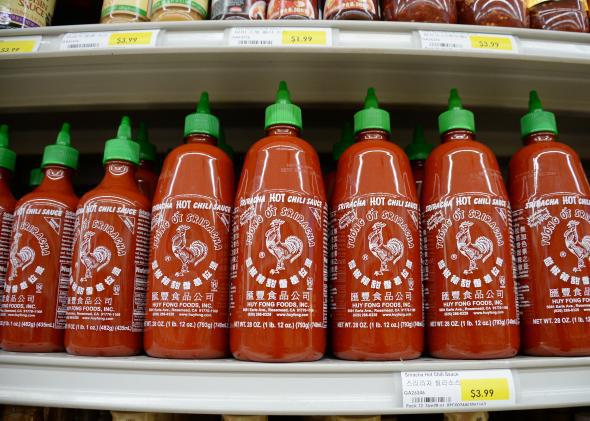Huy Fong Foods has never advertised its best-selling product, the jalapeño-garlic-sugar purée called sriracha. Documentary filmmaker Griffin Hammond has filled that void with his new 33-minute, Kickstarter-funded paean to the condiment, Sriracha, which is streaming now for $5 on Vimeo.
Hammond’s primary purpose is to profile the founder of Huy Fong Foods, David Tran, a Vietnamese refugee of Chinese descent whose California-made version of the Thai sauce has captured hearts nationwide. He also briefly explores the origins of sriracha and interviews lots of Americans who love sriracha. This might make for a fascinating case study of how cult followings turn into mainstream crazes—if Hammond had enough critical distance from his subject matter to analyze it.
Don’t get me wrong; I like sriracha, and I learned a lot from watching Sriracha. I didn’t know, for instance, that Huy Fong Foods is named after the ship that Tran boarded as a refugee after the fall of Saigon, or that Tran uses a rooster in the company logo because he was born in the year of the rooster. I didn’t know that the sauce originated in a small coastal town southeast of Bangkok called Si Racha, where the condiment is served with omelets and local seafood. I didn’t know that chugging sriracha is a popular pastime among bros with YouTube accounts, although it shouldn’t have surprised me. Hammond does a great job of explaining the differences among Huy Fong’s basic sambal oelek (which contains red jalapeños, vinegar, and salt), their chile-garlic sauce (which has added garlic), and their sriracha (which has added garlic and sugar and is puréed). As an educational endeavor, Sriracha is totally worthwhile.
But it would be more worthwhile if it weren’t constantly trying to convince the viewer of how awesome sriracha is. The film opens with a slow, stately piano and strings composition—reminiscent of the score of an Oscar-bait-type historical drama—playing over footage of sriracha being manufactured.
This sentimental intro is followed by a montage of Americans talking about how much they love sriracha. Interviewees describe it as an “obsession,” talk about being “stoked” about it, and say they “eat it on everything.” A woman wearing an “I [heart] [Sriracha bottle]” T-shirt says she keeps a bottle at her desk at work at all times. One guy recalls smuggling bottles into restaurants and a wedding reception.
OK, got it! People really like this stuff. And in the worldview of Hammond’s documentary, there is no opposing viewpoint—everyone he interviews rhapsodizes about it. What, Hammond couldn’t find a single person who thinks sriracha is too sweet, or someone who uses it sparingly instead of slopping it on everything?
More than criticism of sriracha itself, I craved some context for the sriracha lovefest: Why and how did it catch on among Americans, in the absence of formal advertising? How does it compare to other kinds of hot sauce? What does it say about our food culture that there’s a sriracha festival in L.A., and small-batch artisanal sriracha made in Brooklyn? You won’t find out from watching Sriracha. (Nor will you learn anything about Huy Fong Food’s recent legal troubles—the film’s production wrapped before the city of Irwindale, Calif. sued the company over offensive odors emanating from the sriracha factory.)
Instead, you’ll learn a lot of interesting factoids about the condiment, see a lot of footage of red jalapeños being crushed into paste, and hear a lot of sriracha superfans rave about it. Is that worth $5 and half an hour of your time? I guess it depends on how much you love sriracha.
